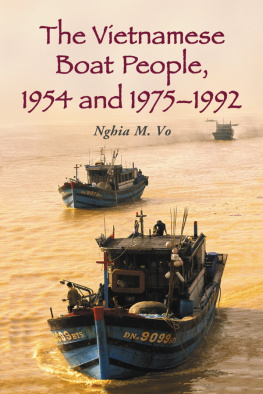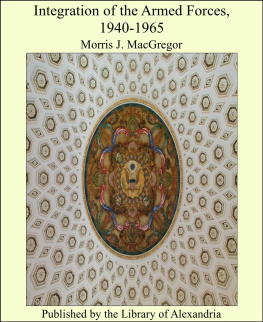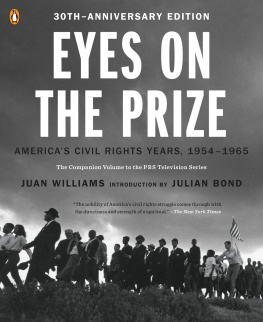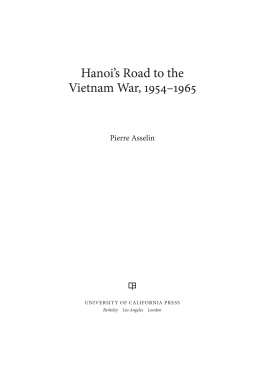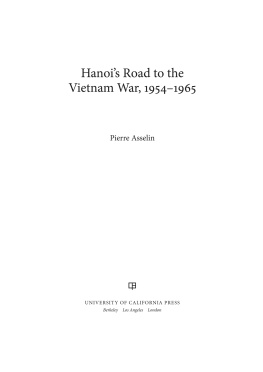2016 by the University Press of Kansas
All rights reserved
Published by the University Press of Kansas (Lawrence, Kansas 66045 ), which was organized by the Kansas Board of Regents and is operated and funded by Emporia State University, Fort Hays State University, Kansas State University, Pittsburg State University, the University of Kansas, and Wichita State University
Library of Congress Cataloging-in-Publication Data
Names: Harris, J. P.
Title: Vietnams high ground : armed struggle for the Central Highlands,
1954 1965 / J. P. Harris.
Description: Lawrence, Kansas : University Press of Kansas, 2016 . | Series:
Modern war studies | Includes bibliographical references and index.
Identifiers: LCCN 2016014280 | ISBN 9780700622832 (cloth : alk. paper) |
ISBN 9780700622849 (ebook)
Subjects: LCSH: Vietnam War, 1961 1975 CampaignsVietnamCentral
Highlands. | Central Highlands (Vietnam)History, Militaryth century.
Classification: LCC DS..C H 2016 | DDC ./ 342095976 dc
LC record available at http://lccn.loc.gov/ 2016014280 .
British Library Cataloguing-in-Publication Data is available.
Printed in the United States of America
The paper used in this publication is recycled and contains percent postconsumer waste. It is acid free and meets the minimum requirements of the American National Standard for Permanence of Paper for Printed Library Materials Z.- 1992 .
Preface
The region that Americans and other Westerners generally call Vietnams Central Highlands is the broader, southern end of the Truong Son or Annamite chain, the range of mountains that forms the boundary between Vietnam and Laos and part of the boundary between Vietnam and Cambodia. Over the years various other names have been used for the region. Today the Vietnamese government calls it the Tay Nguyen (Western Highlands), for although it was central to the old French Indochina, it is on Vietnams western side.
Approximately , square km in area ( km northsouth and km westeast), the Central Highlands constituted a large part of the landmass of the former South Vietnamese state ( 1954 1975 ), but it was by far the most sparsely populated region. Geologically, it is formed largely of granite and basalt, but there are sedimentary rocks too. Large parts of the region are too mountainous to support many people. There are, however, a number of plateau areas that are suitable for agriculture, and this is where the principal towns are situated. Among these plateaus are Kontum (elevation m), Pleiku ( m), and Ban Me Thuot ( m). The highest peaks are Ngoc Linh (, m), at the northern end of the region, and Chu Yang Sinh (, m), in the east.
Because the Central Highlands is so topographically complex, the pattern of rainfall varies considerably. The dry season generally lasts from November to April, while rainfall from May to October is sufficiently heavy to permit the growth of tropical rain forest and thirsty commercial crops. The region is also watered by several sizable rivers and many smaller streams. For centuries the original inhabitantsthe Highland ethnic groups, or Montagnardshad practiced simple subsistence farming on the more favorable terrain. By the early 1960 s the Vietnamese were taking over increasing amounts of the best land and using it to grow a range of plantation crops, including coffee and tea.
Since 1975 large parts of the region have been drastically deforested. In the period covered by this book, however, a large proportion of it was still covered by jungle and grassland. Large, dangerous animals such as wild elephants, wild cattle, tigers, and leopards were present in some areas, and deer and wild pigs were abundant.
The aboriginal peoples of the Central Highlands, who were still a substantial majority of the regions inhabitants in 1954 1965 , are discussed at some length in the main body of the book. It would be pointless to preempt that discussion here. It is important to understand from the outset, however, that although they lived in a state called the Republic of Vietnam, they did not see themselves as Vietnamese and generally were not seen as such by others. The Highland ethnic groups spoke a variety of different tongues. Although their traditional cultures had much in common with one another, they had little in common with that of the Vietnamese. Most Highlanders did not understand the Vietnamese language, and many were fearful and suspicious of the Vietnamese people. Yet many became active participants in (and all had their lives massively disrupted by) what was essentially a Vietnamese civil war.
A study of the political and military struggle for control of this region in 1954 1965 surely needs little justification. The Second Indochina War is generally acknowledged as one of the most important conflicts of the latter half of the twentieth century. Everyone with a basic knowledge of that conflict understands that the Central Highlands was a strategically vital region and that control of it was fiercely contested. It is generally appreciated that many branches of the Ho Chi Minh Trail entered South Vietnam through the Central Highlands and that American Special Forces worked there with Highland troops from an early stage in the war. It is also widely known that in November 1965 the US Army had its first major clashes with the North Vietnamese in the Central Highlands.
Serious students of the war also know that events in this region precipitated its end. The South Vietnamese defeat at Ban Me Thuot in April 1975 led to President Nguyen Van Thieus ill-judged order to abandon the Central Highlands, a move for which no contingency plans had been made. Taking advantage of the chaotic retreat, the North Vietnamese were able to cross the narrow coastal plain, cut South Vietnam in two, and thereby envelop South Vietnamese troops in the northern section. For the anti-Communist side, this was a long-imagined nightmare scenario. Once it became reality, a final Communist victory could not be long delayed.
Even in the early 1960 s, when guerrilla warfare was the norm, highly placed Vietnamese on both sides realized that the fighting in the Highlands would eventually assume a more high-intensity, conventional nature. To the Communist high command, the rugged terrain and dense vegetation of the Central Highlands offered the best chance of ambushing and annihilating major units of the South Vietnamese armed forces and of drawing in and destroying their strategic reserves. When large American units arrived in South Vietnam, the Central Highlands seemed to be the most suitable place to engage them, too. Both sides seemed to sense from an early stage in the war, moreover, that control of the high ground looming over South Vietnams narrow coastal plain might ultimately prove decisive.
The Central Highlands was therefore strategically vital ground in one of recent historys major wars. The struggle to control this region seemed a worthwhile field of study, a point that first suggested itself when touring parts of it with Ed Flint, a Sandhurst colleague and friend, in December 2004 and January 2005 . Covering the entire struggle, from 1954 to 1975 , in a single monograph, however, always seemed more than could be managed effectively. From the outset, therefore, the intention was to stop at the end of 1965 , after the US Army had fought its first battles in the region and after which, in the eyes of many Americans, the war entered a new phase.




